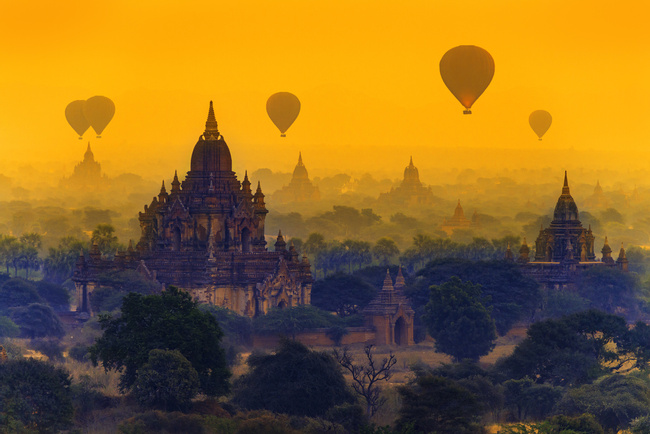- Travel Guides
Government and Economy in Myanmar
At the end of British rule, Myanmar was the second richest country in Southeast Asia. Because of years of isolationist policies, it is now one of the poorest, and around 26 percent of the population lives in poverty. The Burmese hope that their recent transition to a democratically elected government will help attract foreign investment.

From 1962 until 2011, Myanmar was ruled by the Tatmadaw military. It was known as the State Law and Order Restoration Council (SLORC). In 2011 the beleaguered National League for Democracy (NLD) came into power, along with Myanmar’s beloved Aung San Suu Kyi. The NLD established a parliamentary republic, replacing the military’s oppressive socialist regime. There are still internal power struggles between the military and parliament, but much of this struggle takes place in secret.
Aung San Suu Kyi serves as the first state counselor of Myanmar, although she is generally considered the leader of the NLD. Myanmar’s president is a man named Htin Kyaw. The first state counselor was a position created by the president to serve as a link between the executive and legislative branches of the government.
Corruption is rampant in Myanmar’s government, and government spending is not transparent. Bribery is a common part of business and politics.
Economic Struggles
Myanmar has everything it needs for a booming economy. This country has abundant natural resources, a young population, and is nearby two huge economic powers — China and India. But there’s a lot of work that the government still needs to do.
It will take Myanmar a while to emerge from the stupefying effects of SLORC. Private citizens have limited legal recourse. It’s still difficult for a private citizen to hold on to their property if the government sees fit to seize it, which is often cited as one of the major roadblocks to an improved economy.
Myanmar also does not have modern financial institutions. In the past, agriculture has played a huge role in improving the country’s wealth. At this point, it is nearly impossible for farmers to take out substantial loans. Without the ability to create loans, it’s difficult for financial institutions to support economic growth.
One of Myanmar’s top exports used to be rice. The land surrounding the Aywerwaddy River is very fertile, and can yield excellent crops. Under socialist rule, farmers had to sell all of their rice to the government for a fixed price. Now, Myanmar needs to modernize its farming practices to keep pace with the rest of the world. Flooding during the rainy season also presents a frequent setback.
The 2011 constitution removed a lot of barriers to foreign capital, and since then international investments have gone from $300 million in 2009 to $20 billion in 2011. Myanmar is seeing an economic rebirth as it opens itself more to the world around it. With ample natural resources and a blossoming tourist industry, it has the potential to again become a prominent Southeast Asian power.
Currently, Myanmar’s GDP is $60 billion. Myanmar’s economy has dramatically improved in the past decade — as recently as 2007 the GDP was only $20 billion. With improved tourism infrastructure and increased privatization there is hope that Myanmar could continue making steady gains in the next decade.
It's more than just having a good time or visiting beautiful places (although that's absolutely a part of it!), it's about being part of a unique experience that stays with you.



